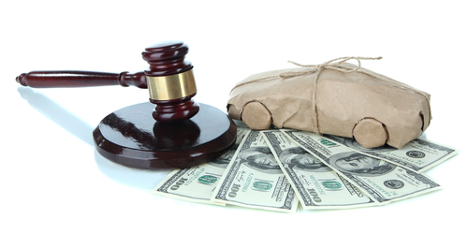Retail Demand Buoys Q1 Wholesale Prices

All of that profit dealers are generating with record-setting certified pre-owned metal and other used vehicles are keeping wholesale prices at slightly higher levels than a year ago.
Although wholesale prices fell in the final two months of this year’s first quarter, Manheim determined that the average level for Q1 came in 1.6 percent higher than the fourth quarter of last year and 1.3 percent above the same quarter last year.
To arrive at those readings, Manheim found that wholesale used-vehicle prices (on a mix-, mileage-, and seasonally adjusted basis) softened by 0.5 percent in March. Chief economist Tom Webb pointed out that “naturally” prices rose before the seasonal adjustment.
All told, March’s decline pushed the Manheim Used Vehicle Value Index to a reading of 124.5, which was virtually identical to its year-ago reading of 124.4.
“Wholesale pricing has remained slightly above trend level due to continued strong profit opportunities on the subsequent retail sale,” Webb said.
“The used vehicle market is off to a good start in 2015, with wholesale prices remaining above trend level thanks in part to continued strong profit opportunities in the retail market,” Webb continued. “With pricing slightly stronger than expected, consumers continue to see the value in purchasing used vehicles, which remain a profitable part of a dealer’s business.”
Three of the six vehicle segments Manheim tracks each month posted price movements of at least 5 percent in March. While prices for pickups (up 5.4 percent) and vans (up 5.0 percent) climbed, prices for compact cars dropped (down 5.2 percent).
While Manheim noticed prices for SUVs and CUVs settled virtually flat versus a year ago (up 0.2 percent), analysts pointed out prices for luxury cars crept up by 1.3 percent while prices for midsize cars dipped by 1.9 percent.
“In recent months, as well as over the past year, wholesale pricing for compact cars has been weak. Pickups and vans continued to be the significant outperformers,” Webb said.
Within the pricing tiers, Webb indicated there continued to be “weakness” in the range spanning $9,000 to $11,000 while the “strength” covers vehicles costing above $15,000.
“Pricing for dealer-consigned units improved in March after showing some temporary weakness in February,” Webb said.
“On the used inventory side, it will be important to see if dealers placed the right money on the slightly higher-than-expected number of trade-ins they received in March,” he continued. “Auction activity in the coming weeks will tell that story.”
Analysis of Rental Risk Units
Manheim mentioned pricing for rental risk units in March eased from a year ago.
Webb noted that auction prices for rental risk units sold in March jumped up from February, but the seasonal movement was less than last year’s spike. As a result, prices — “although still strong,” according to Webb — softened by 4.2 percent from a year ago, adjusting for mileage and broad changes in mix.
On a sales-weighted basis, Webb said rental risk prices in the first quarter dropped 2 percent year-over-year.
“Auction volumes for rental risk units were up significantly both in March and for the quarter as a whole,” Webb said. “Conversion rates were better than average. Although average mileage on rental risk units in March dipped from February’s record high, it remained above 45,000 miles, and up 8 percent from a year ago.”
Used-Vehicle Retail Market Highlights
Webb indicated retail used sales by franchised and independent dealers appear to have been level with a year ago both in March and for the quarter.
“Dealers retailing units in the $18,000 and above range did better than those selling lower-end units,” he said.
As previously reported by Auto Remarketing, Manheim also recapped CarMax posted a strong 7-percent increase in same-store retail used unit volumes and an average transaction price of $19,297 for its fiscal quarter that ended Feb. 28.
Webb went on to highlight manufacturer certified pre-owned sales also continued their record pace, up 8 percent in March and 11 percent year-to-date. Auto Remarketing has more CPO sales details as well as breakdowns of how domestic OEMs fared as well as how foreign automakers performed.
Webb also touched on his assessment as to why other parts of the used-retail market didn’t achieve the success like the CPO segment did.
“Dealers selling lower-priced units were likely hampered by a less-than-stellar tax refund season,” Webb said. “Since the start of February, the level of tax refunds has fallen below the year-ago amount in seven out of eight weeks. Through March, total refunds were down 1.1 percent, or $2.3 billion, from a year ago.
New-Vehicle Sales Commentary
Unfolding like Manheim expected, Webb noted the seasonally adjusted annual selling rate for new models bounced back in March to surpass 17 million from a “weather-dampened” 16.2 million pace in February.
“March’s strength was concentrated in foreign nameplates due to higher incentives — possibly allowed by exchange rate movements — and the closeout of the fiscal year for Japanese companies,” Webb said.
“Industrywide, however, it is still true that the new-vehicle sales environment is supportive to used-vehicle residuals,” he continued.
Average transaction prices continue to rise across the board as they are 3.5 higher over the past year to $33,280, according to Kelley Blue Book. However, KBB data showed incentive spending was flat in March, ticking down for domestic brands while rising slightly for foreign nameplates.
“Reasonable new-vehicle inventory levels going into April should also help used-vehicle values,” Webb said.
Editor’s note: More analysis and commentary Webb shared during his quarterly conference call is on tap to be included this week in both Auto Remarketing Today and SubPrime News Update.


